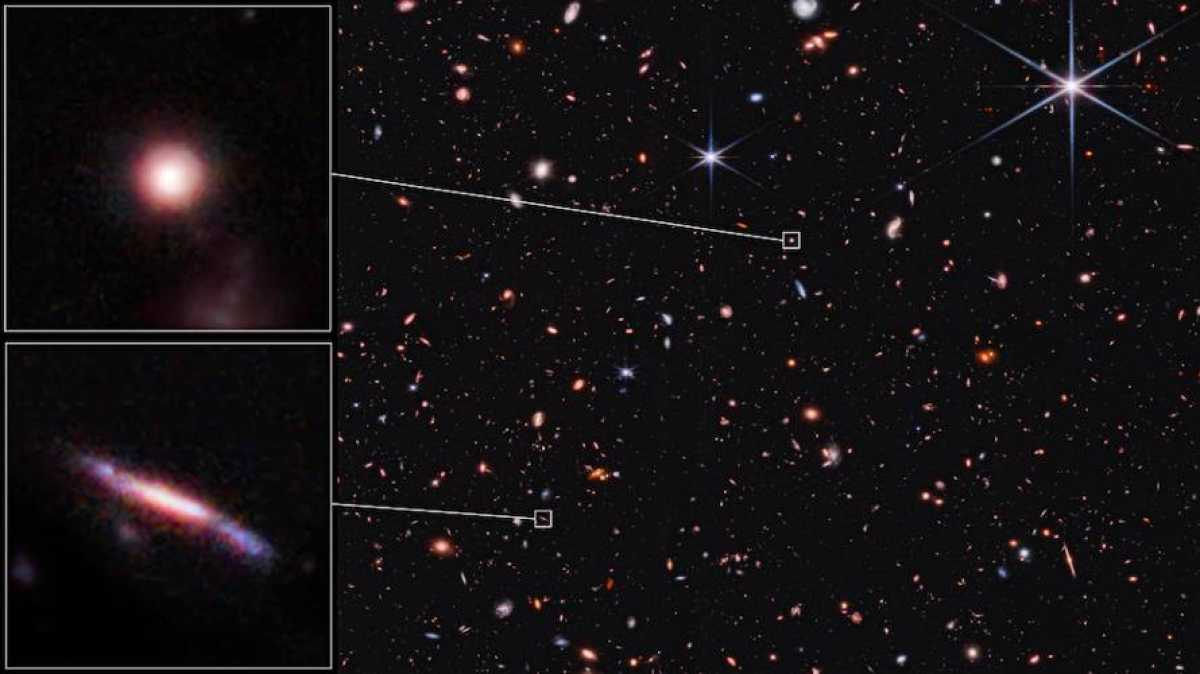News
Galaxies in the Early Universe Resemble Breadsticks, Research Finds

Columbia researchers studying images from NASA‘s James Webb Space Telescope have made a fascinating discovery about galaxies in the early universe. They have found that these galaxies, estimated to have existed between 600 million to 6 billion years ago, predominantly have a flat and elongated shape, resembling breadsticks, rather than the more common round shape found in galaxies of the present day.
Lead author Viraj Pandya, a NASA Hubble Fellow at Columbia University, highlighted that around 50 to 80% of the galaxies analyzed exhibited this flattened structure, surprising researchers since it is not commonly observed in the universe today.
The researchers focused their study on near-infrared images provided by the James Webb Space Telescope’s GOODS-North field. Their analysis revealed that the majority of the distant galaxies resembled breadsticks, while fewer were spherical or pizza pie-shaped.
Co-author Haowen Zhang, a PhD candidate at the University of Arizona, speculated that if we could travel back billions of years, our own Milky Way galaxy might have appeared more like a breadstick in its early days, based on recent estimations of its mass made by the Webb telescope.
These elongated galaxies seen in the early universe demonstrated much less mass compared to nearby spirals and ellipticals. They served as precursors to the more massive galaxies we see today. According to Kartheik Iyer, a co-author and NASA Hubble Fellow at Columbia University, as the early universe aged, galaxies had less time to grow, resulting in their smaller size and flattened shape.
The study’s findings corroborate earlier observations made by the Hubble telescope, which indicated a prevalence of elongated galaxies. However, the improved sensitivity to infrared light possessed by the James Webb Space Telescope allowed for a more detailed examination, confirming that Hubble had not missed any additional features in the galaxies they both observed.
Researchers have put forth a hypothesis suggesting that the prevalence of the breadstick-shaped galaxies in the early universe may be due to the presence of filaments of dark matter. These filaments formed a sort of skeletal background, sometimes referred to as a cosmic highway, that guided the movement of gas and stars. While these filaments still exist, they have become more diffuse over time as the universe expands, potentially leading to the formation of fewer elongated galaxies.
The study’s authors amusingly referred to their data visualizations as “bananas,” as they formed distinctive diagrams resembling the shape of bananas. These banana-shaped diagrams serve as another indication of the dominance of elongated galaxies, or breadsticks, during the first 4 billion years of the universe’s history.
Although the research is in its early stages, scientists are excited about the possibilities it opens up for further exploration and refinement. They hope to gather a larger sample size from the James Webb Space Telescope and continue refining their models to gain a deeper understanding of the exact geometries and properties of distant galaxies.
This news article is an adaptation of a Columbia University press release that drew a comparison between the breadstick-shaped galaxies and food items like pizza dough, pool noodles, and surfboards.












